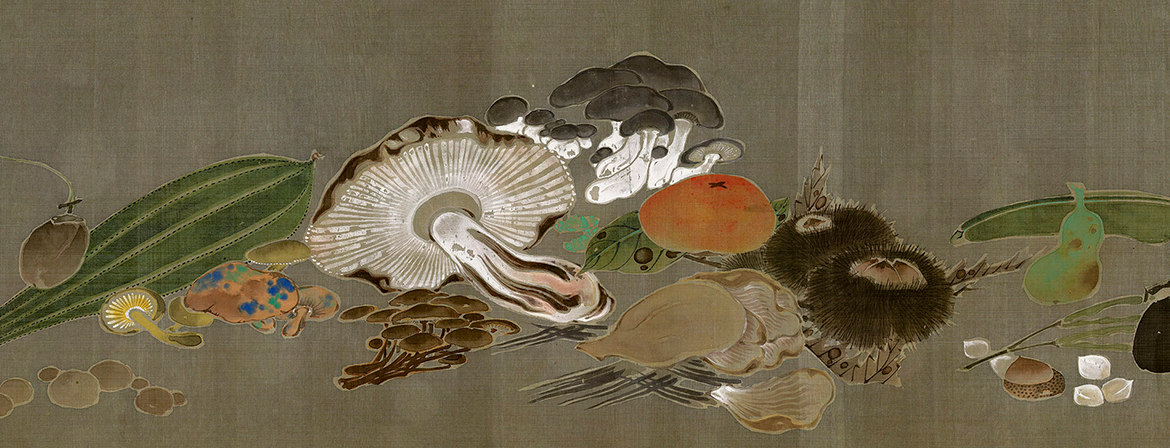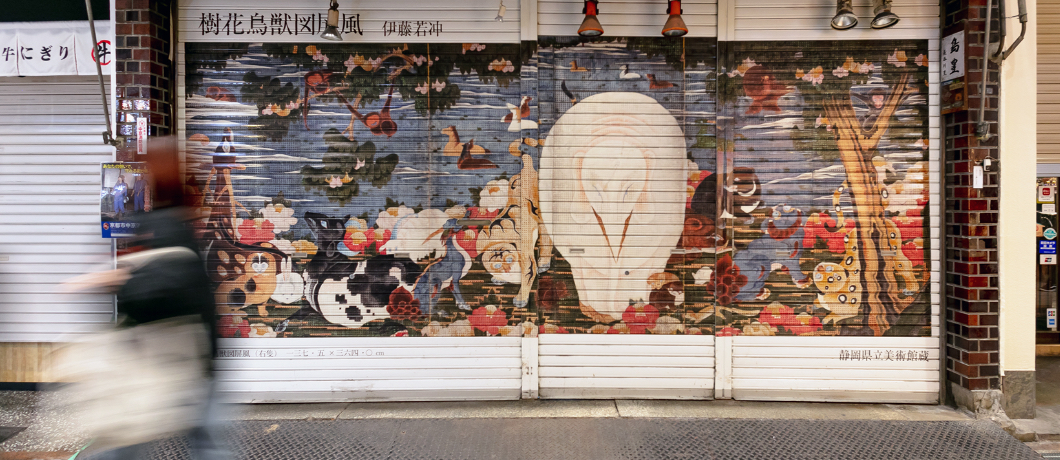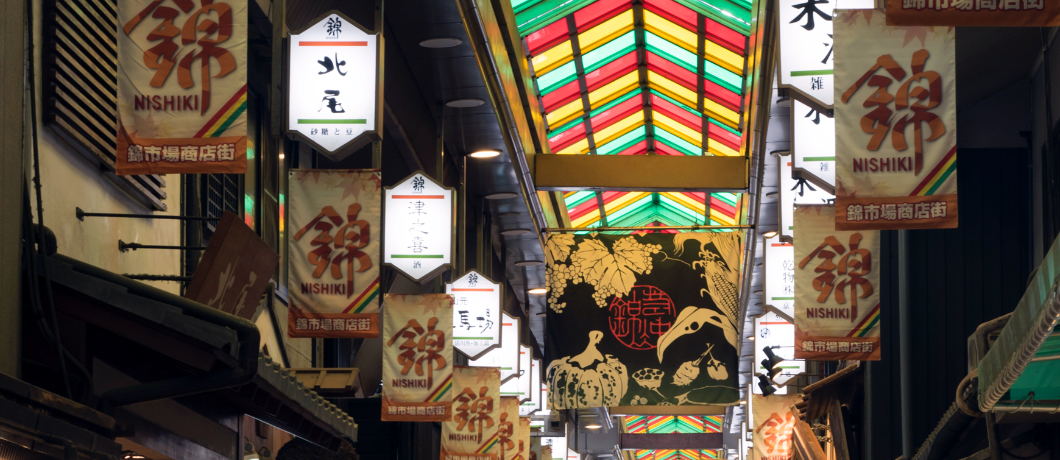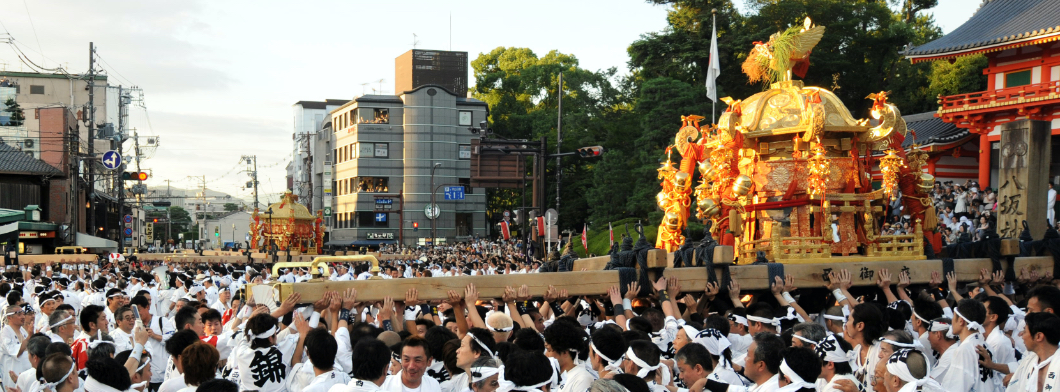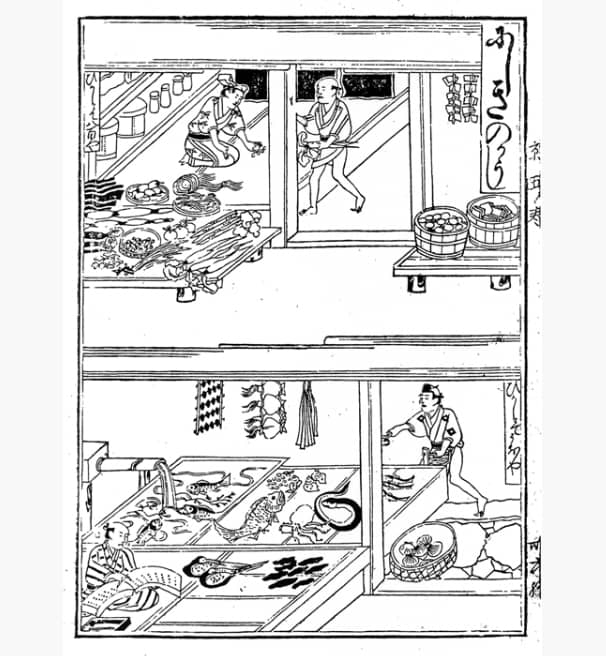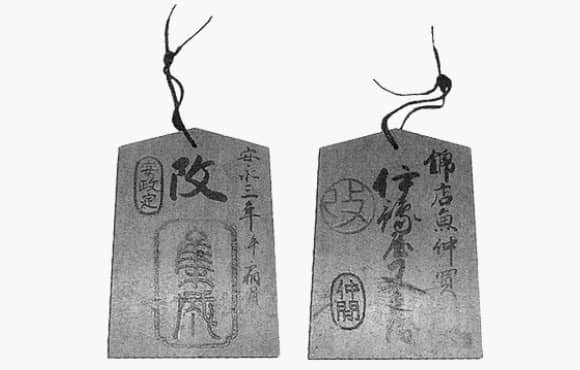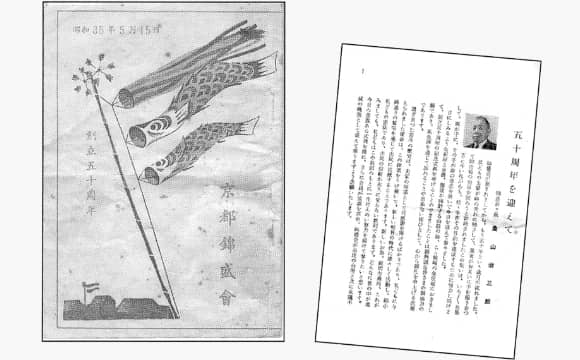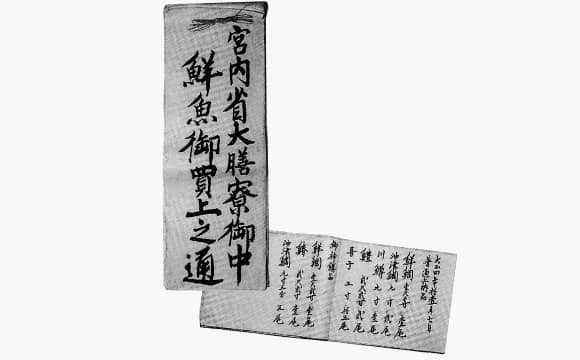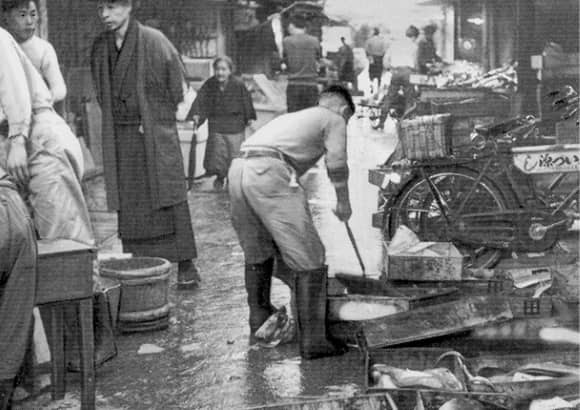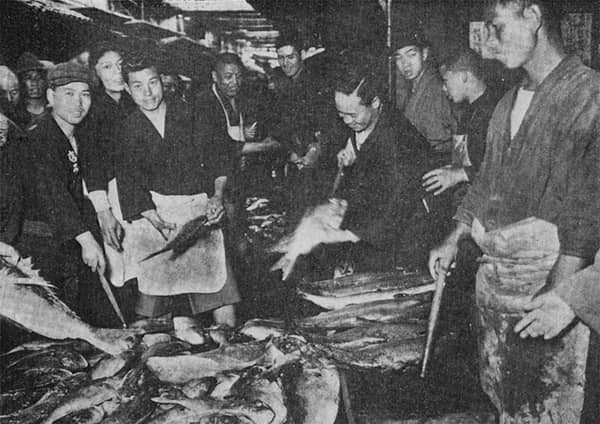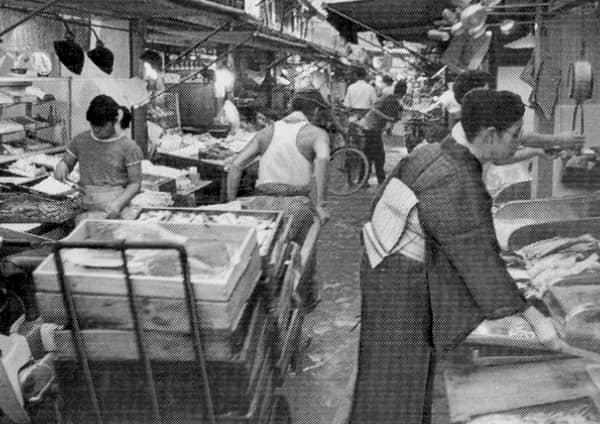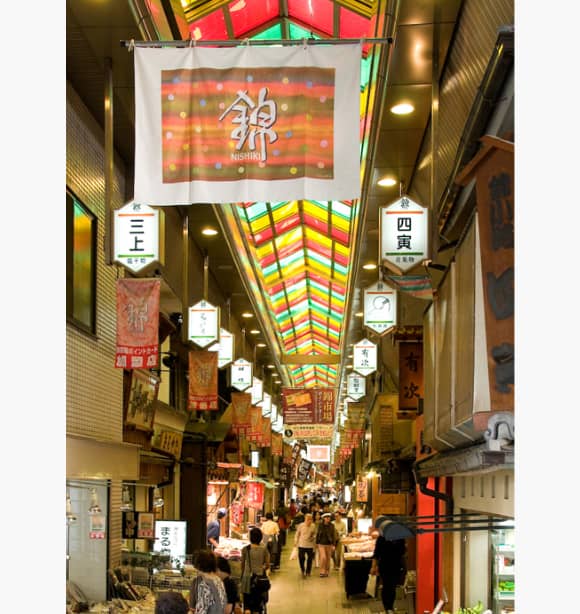400 years of history handed down to the present.
Not according to official records,
It is estimated that a market already existed in this area in the Heian period (794-1185).
However, as far as official records state, it was in 1615 that Nishiki market was born. In 1615,
the Edo shogunate officially recognized three fish wholesalers (santana-uotonya) in Kyoto.These were the Kami-no-Tana, the Nishiki-no-tana, and the Rokujo-no-tana.
That was the beginning of Nishiki’s journey toward becoming a full-scale fish market.

The groundwater was essential for the development of Nishiki Market.
The reason why it has been assumed that a market was established in this area during the Heian period (794-1192) is because the area has been blessed with good-quality groundwater. Cold groundwater is suitable for preserving fish and fowl. Furthermore, the location of the market in the center of a populated area and its convenient location for deliveries to the Imperial Palace are also considered to have been reasons for the development of Nishiki Market.
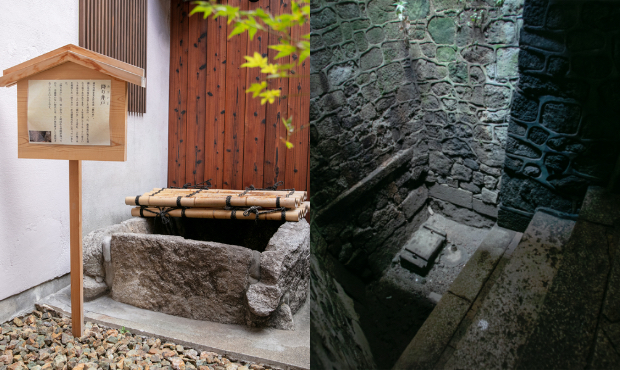
Nishiki Market is a part of Kyoto's food culture.
Nishiki Market is often referred to as "Kyoto's kitchen.” It has Kyoto vegetables, freshwater fish from Lake Biwa, hamo (pike conger), guji (tilefish), sasa flounder, yuba (soy milk skin), fu (wheat gluten cake), and more. Fresh vegetables, fish, and other seasonal ingredients used not only in Kyoto's traditional high-end restaurants, but also in Kyoto's home cooking, known as obanzai, are gathered here. There is no place like Nishiki to be exposed to Kyoto's unique culinary culture. Asking the people working in the stores for their expert opinions and knowledge on how to eat certain foods is also part of the fun. At the end of the year and during the New Year's holidays, the market is crowded with so many people that it is an effort to move forward, which is also a tradition in Kyoto.
Who called it "dung alley"?
Nishiki Koji was called "Gusoku Koji" in the Heian period (794-1185), derived from the fact that it was a place to remove one's armor and helmet (“gusoku” in Japanese) when entering and leaving the Imperial Palace. There was also a time when it was called “kuso-koji” (“dung alley” in English), possibly because of the similarity between the sounds of the words “gusoku” and “kuso.” In later years, the name was changed to Nishiki-koji.


